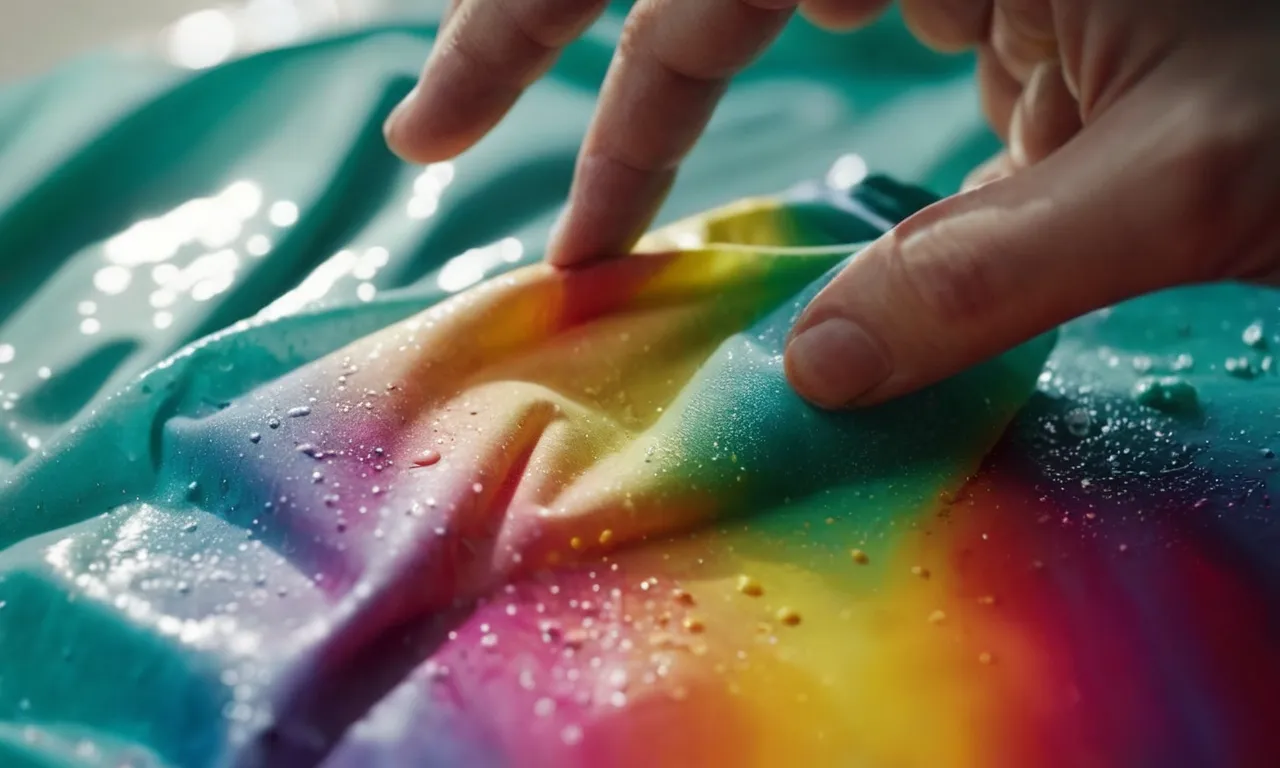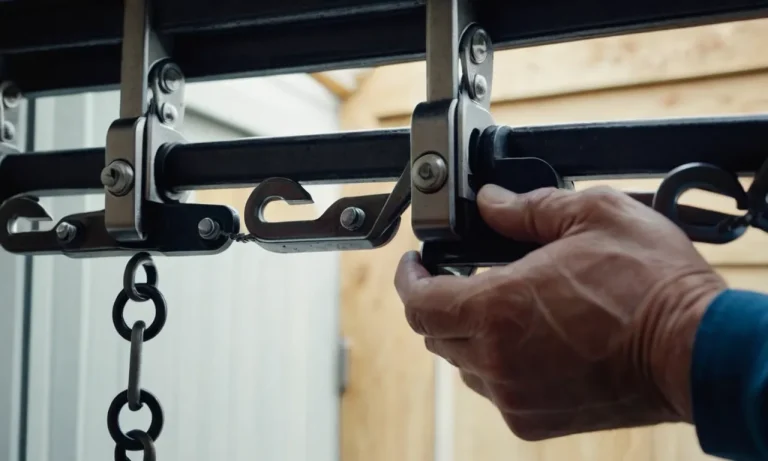How To Get Spray Paint Off Plastic: A Step-By-Step Guide
Spray paint can leave unwanted marks on plastic surfaces, like patio furniture, toys, or household items. If you’ve found yourself with spray paint where you don’t want it, don’t panic. With a little elbow grease and the right techniques, you can get spray paint off plastic safely and effectively.
If you’re short on time, here’s a quick answer to your question: use a plastic-safe paint remover like acetone or mineral spirits, gently scrubbing with a soft brush or abrasive sponge. Test on an inconspicuous area first.
Assessing the Type of Plastic and Paint
Before attempting to remove spray paint from plastic, it is important to assess the type of plastic and paint involved. Different types of plastics and paints may require different techniques and products for effective removal.
Taking the time to identify the plastic type and consider the paint type will ensure that you choose the most appropriate method for removing the spray paint.
Identify the plastic type
The first step in assessing the situation is to identify the type of plastic you are dealing with. Plastics can vary in composition and properties, which can affect the effectiveness of different cleaning methods. Some common types of plastic include polypropylene, polyethylene, polystyrene, and PVC.
To determine the type of plastic, look for any markings or symbols on the plastic item. These symbols are often located on the bottom of the item and can indicate the type of plastic used.
If you are unable to find any markings or symbols, you can try conducting a simple test to identify the plastic type. For example, you can try pressing a hot needle against a hidden area of the plastic. If the plastic melts and emits a sweet smell, it is likely made of polyethylene.
On the other hand, if the plastic melts and emits a harsh smell, it may be made of PVC. Conducting these tests can help narrow down the type of plastic and guide you in selecting the appropriate removal method.
Consider the paint type
After identifying the plastic type, it is important to consider the type of spray paint used. Different spray paints have different formulations, and some may adhere more strongly to plastic surfaces than others. Common types of spray paint include acrylic, enamel, and lacquer.
Acrylic spray paint, for example, is water-based and tends to adhere less strongly to plastics. On the other hand, enamel and lacquer spray paints are oil-based and may require more aggressive removal methods.
To determine the type of spray paint, you can check the label or packaging of the paint can. The label should provide information about the type of paint and any specific instructions for its removal. If you are unsure about the type of paint used, you can also try conducting a small test in an inconspicuous area.
Apply a small amount of paint remover or solvent to a cotton swab and gently rub it on the painted surface. Observe how the paint reacts to the remover, as this can give you an indication of the paint type.
By assessing the type of plastic and paint involved, you can make informed decisions about the best methods and products to use for removing spray paint from plastic. Remember to always follow the instructions provided by the manufacturer of the paint remover or solvent, and test any products on a small, inconspicuous area before applying them to the entire surface.
Trying Gentle Cleaning Methods First
When it comes to removing spray paint from plastic, it’s always a good idea to start with gentle cleaning methods before moving on to more aggressive options. Not only will this help protect the surface of the plastic, but it can also save you time and money in the long run.
Use dish soap and warm water
One of the easiest and most accessible methods to remove spray paint from plastic is by using a mixture of dish soap and warm water. Start by filling a bucket or basin with warm water and adding a few drops of dish soap.
Stir the mixture until it becomes soapy, then use a sponge or soft cloth to gently scrub the painted area. Rinse with clean water and repeat if necessary.
Try baking soda
Baking soda is another effective and gentle option for removing spray paint from plastic. Create a paste by mixing baking soda with a small amount of water until it forms a thick consistency. Apply the paste to the painted area and let it sit for a few minutes.
Then, use a soft cloth or sponge to gently rub the paste in circular motions. Rinse with water and repeat the process if needed.
Use diluted vinegar
Vinegar is a versatile household cleaner that can also be used to remove spray paint from plastic. Mix equal parts of white vinegar and water in a spray bottle. Spray the mixture onto the painted area and let it sit for a few minutes. Then, gently scrub the paint off using a sponge or cloth.
Rinse with water and repeat if necessary.
Try rubbing alcohol
Rubbing alcohol is another option for removing spray paint from plastic. Moisten a cotton ball or cloth with rubbing alcohol and gently dab the painted area. The alcohol will help break down the paint, making it easier to remove.
Be sure to test a small, inconspicuous area first to ensure that the alcohol does not damage the plastic. Repeat the process as needed until the paint is completely gone.
Remember, when using any of these methods, it’s important to be gentle and patient. Avoid using abrasive materials or harsh chemicals, as they can damage the plastic surface. If the paint does not come off with these gentle methods, it may be necessary to try more specialized products or seek professional help.
Using Chemical Paint Removers
When it comes to removing spray paint from plastic, there are several chemical paint removers that can help get the job done effectively. These removers work by breaking down the paint and making it easier to remove from the surface of the plastic. Here are some commonly used chemical paint removers:
Acetone
Acetone is a powerful solvent that can effectively remove spray paint from plastic surfaces. It is commonly found in nail polish removers and can be purchased at most hardware stores. To use acetone, simply apply it to a clean cloth or sponge and gently rub the painted area.
Be sure to wear gloves and work in a well-ventilated area as acetone can be harsh on the skin and has a strong odor.
Mineral spirits
Mineral spirits, also known as white spirits, is another effective paint remover for plastic surfaces. It is less harsh than acetone and can be found in most paint supply stores. To use mineral spirits, apply a small amount to a clean cloth and gently rub the painted area.
Be sure to wear gloves and work in a well-ventilated area as mineral spirits can also have a strong odor.
Paint thinner
Paint thinner is a common product used to thin oil-based paints, but it can also be used as a paint remover for plastic surfaces. It is important to note that paint thinner is stronger than mineral spirits and acetone, so it should be used with caution.
Apply a small amount to a clean cloth and gently rub the painted area. Again, be sure to wear gloves and work in a well-ventilated area.
Commercial plastic-safe paint strippers
There are also commercial paint strippers specifically designed for removing paint from plastic surfaces. These products are formulated to be safe for use on plastics and can be found at most hardware stores. Follow the instructions provided on the product packaging for best results.
These paint strippers typically require some time to work, so be sure to allow enough time for the product to penetrate the paint before attempting to remove it.
It’s important to note that not all chemical paint removers are safe for all types of plastics. Some plastics may be more sensitive to certain chemicals and could be damaged by the use of strong solvents.
It is always a good idea to test the paint remover on a small, inconspicuous area of the plastic first to ensure compatibility.
Employing Manual Removal Techniques
When it comes to removing spray paint from plastic surfaces, there are several manual removal techniques that can be effective. These methods involve using everyday household items to gently scrub away the paint without causing damage to the plastic. Here are some popular manual removal techniques:
Soft brush scrubbing
One effective way to remove spray paint from plastic is by using a soft brush. This can be a toothbrush or any other brush with soft bristles. Simply dip the brush into warm soapy water and gently scrub the painted area in circular motions.
The gentle friction should help lift the paint off the plastic surface. Rinse the plastic thoroughly after scrubbing to remove any residue.
Plastic scraper
If the spray paint is particularly stubborn, a plastic scraper can be used to gently scrape away the paint. Make sure to use a plastic scraper specifically designed for delicate surfaces to avoid scratches.
Start by applying a small amount of rubbing alcohol or acetone to the painted area to loosen the paint. Then, use the plastic scraper to carefully scrape off the paint, applying gentle pressure. Be cautious not to press too hard to prevent damage to the plastic.
Steel wool
For more durable plastic surfaces, such as outdoor furniture or automotive parts, steel wool can be used to remove spray paint. Start by wetting the steel wool and applying a small amount of dish soap or a mild abrasive cleaner. Gently rub the painted area using circular motions.
The abrasive nature of the steel wool combined with the cleaning solution should help remove the paint. Rinse the plastic thoroughly after scrubbing to remove any residue.
Abrasive cleaning sponge
An abrasive cleaning sponge can also be used to remove spray paint from plastic. These sponges have a rough texture that can help lift off the paint. Wet the sponge and apply a small amount of dish soap or a mild abrasive cleaner. Gently scrub the painted area using the rough side of the sponge.
Rinse the plastic thoroughly after scrubbing to remove any residue.
Remember, it’s important to always test these manual removal techniques on a small, inconspicuous area of the plastic surface before applying them to the entire painted area. This will ensure that the technique does not cause any damage or discoloration to the plastic.
If in doubt, seek professional advice or assistance.
Taking Safety Precautions
When it comes to removing spray paint from plastic, it’s important to prioritize safety. This means taking the necessary precautions to protect yourself and the environment. Here are some steps you can take to ensure a safe and successful paint removal process:
Work in a well-ventilated area
Before you begin removing the spray paint, make sure you are working in a well-ventilated area. This will help to minimize the inhalation of any fumes or chemicals that may be released during the process.
Open windows and doors to allow for adequate airflow, or consider working outside if weather permits.
Wear protective gloves and eyewear
Protective gloves and eyewear are essential when dealing with chemicals or abrasive substances. Wearing gloves will prevent any potential skin irritation or contact with harmful substances. Additionally, wearing eyewear will shield your eyes from any splatters or accidental contact with the paint remover.
Spot test chemicals first
Before applying any chemicals or solvents to the plastic surface, it’s crucial to conduct a spot test. This involves applying a small amount of the chemical to an inconspicuous area of the plastic and observing any adverse reactions.
If there are no negative effects, you can proceed with confidence knowing that the chemical won’t damage the plastic.
Dispose of chemicals properly
When you’re finished with the paint removal process, it’s important to dispose of any chemicals or solvents properly. Check with your local waste management facility for guidelines on how to dispose of hazardous materials safely.
This will help to protect the environment and prevent any potential harm.
Avoid over-scrubbing plastic
While it may be tempting to vigorously scrub away the spray paint, it’s important to exercise caution when working with plastic. Over-scrubbing can potentially damage the surface of the plastic, leaving it scratched or discolored.
Instead, use gentle and controlled motions to remove the paint without causing any harm.
By following these safety precautions, you can effectively remove spray paint from plastic while minimizing any potential risks or damage. Remember to prioritize safety throughout the entire process for a successful outcome.
Preventing Future Paint Stains
When it comes to spray painting, prevention is key. By taking a few simple precautions, you can minimize the risk of paint stains on your plastic surfaces. Here are some effective tips to consider:
Use drop cloths when spray painting
Placing drop cloths or old sheets around the area where you’ll be spray painting can help catch any overspray or drips. This not only protects your plastic surfaces but also makes cleaning up much easier.
Make sure to secure the drop cloths properly to avoid any accidents or unwanted movement during the painting process.
Mask off plastic surfaces while painting
Before you start spray painting, take the time to properly mask off any plastic surfaces that you want to protect. Use painter’s tape or masking tape to cover the areas you don’t want to be painted. This will create a barrier between the paint and the plastic, preventing any accidental splatters or stains.
Seal plastic beforehand with primer
If you’re painting a plastic surface that has a history of being prone to stains, consider applying a primer before spray painting. Primers create a smooth and even surface for the paint to adhere to, reducing the chances of paint stains.
Make sure to choose a primer specifically designed for plastic surfaces and follow the manufacturer’s instructions for best results.
By following these preventive measures, you can significantly reduce the chances of getting spray paint stains on your plastic surfaces. Remember, preparation is key when it comes to achieving a clean and professional-looking paint job.
Conclusion
Removing spray paint from plastic takes a little time and effort, but it can be done with common household ingredients or cleaners made for plastic. Always spot test chemicals first, and take safety precautions when using harsh solvents.
With the right methods and a delicate approach, you can get your plastic looking good as new again. Just be patient and persistent!







